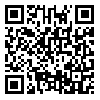Volume 3, Issue 3 (September 2018)
J Environ Health Sustain Dev 2018, 3(3): 585-592 |
Back to browse issues page
Download citation:
BibTeX | RIS | EndNote | Medlars | ProCite | Reference Manager | RefWorks
Send citation to:



BibTeX | RIS | EndNote | Medlars | ProCite | Reference Manager | RefWorks
Send citation to:
Abbasi F, Samaei M R, Mehdizadeh A. The Main Challenges and Suggested Solutions for Optimization of Water Management in an Educational hospital. J Environ Health Sustain Dev 2018; 3 (3) :585-592
URL: http://jehsd.ssu.ac.ir/article-1-127-en.html
URL: http://jehsd.ssu.ac.ir/article-1-127-en.html
Environmental Health Engineering, Shiraz University of Medical Science, Shiraz, Iran.
Abstract: (15654 Views)
Introduction: Hospitals are one of the main water consumers in urbane area. Due to lack of enough information, the challenges and some of the solutions were investigated for optimization of water management.
Materials and Methods: This study was a cross-sectional study in a Shiraz educational hospital. Data were collected by questionnaires with 146 items. The items was classified in several steps; (1) determination of present situation; (2) identification of challenges in water management; (3) identification of opportunities for reducing water consumption; (4) writing several practical scenarios; (5) cost-benefits analysis for each scenarios; (6) providing the results to the hospital for decision-making. Scenarios were including: installation of a bottle 1.5 litters in toilet flushing, substitution of water cooling with mixture ventilation system (natural and artificial air conditioning system), reuse of regeneration water from cation exchanger, substitution of flooding irrigation with dropping system, using the native or adaptable plants with dry climate.
Results: According to the results, 48488 m3/month water was required; however, it was 431125 and 12491500 m3/month in winter and summer (present situation). The cost-benefit of scenario 1,2,3,4 and 5 were 960,170,2370000,13500 and 7500 USD, respectively. Moreover, the investment repayment were 4 years, 1 month, 3.06 years, lower than 1 month, and 3.8 years, respectively.
Conclusion: Water consumption was 8-200 times higher than really water demand. It could be result of traditional distribution system and improper management. The scenario 4 was the best alternative for this hospital. Since the cost-benefit ratio to investment repayment period was higher than others.
Materials and Methods: This study was a cross-sectional study in a Shiraz educational hospital. Data were collected by questionnaires with 146 items. The items was classified in several steps; (1) determination of present situation; (2) identification of challenges in water management; (3) identification of opportunities for reducing water consumption; (4) writing several practical scenarios; (5) cost-benefits analysis for each scenarios; (6) providing the results to the hospital for decision-making. Scenarios were including: installation of a bottle 1.5 litters in toilet flushing, substitution of water cooling with mixture ventilation system (natural and artificial air conditioning system), reuse of regeneration water from cation exchanger, substitution of flooding irrigation with dropping system, using the native or adaptable plants with dry climate.
Results: According to the results, 48488 m3/month water was required; however, it was 431125 and 12491500 m3/month in winter and summer (present situation). The cost-benefit of scenario 1,2,3,4 and 5 were 960,170,2370000,13500 and 7500 USD, respectively. Moreover, the investment repayment were 4 years, 1 month, 3.06 years, lower than 1 month, and 3.8 years, respectively.
Conclusion: Water consumption was 8-200 times higher than really water demand. It could be result of traditional distribution system and improper management. The scenario 4 was the best alternative for this hospital. Since the cost-benefit ratio to investment repayment period was higher than others.
Type of Study: Original articles |
Subject:
Special
Received: 2018/04/28 | Accepted: 2018/10/2 | Published: 2018/09/1
Received: 2018/04/28 | Accepted: 2018/10/2 | Published: 2018/09/1
Send email to the article author
| Rights and permissions | |
 |
This work is licensed under a Creative Commons Attribution-NonCommercial 4.0 International License. |






